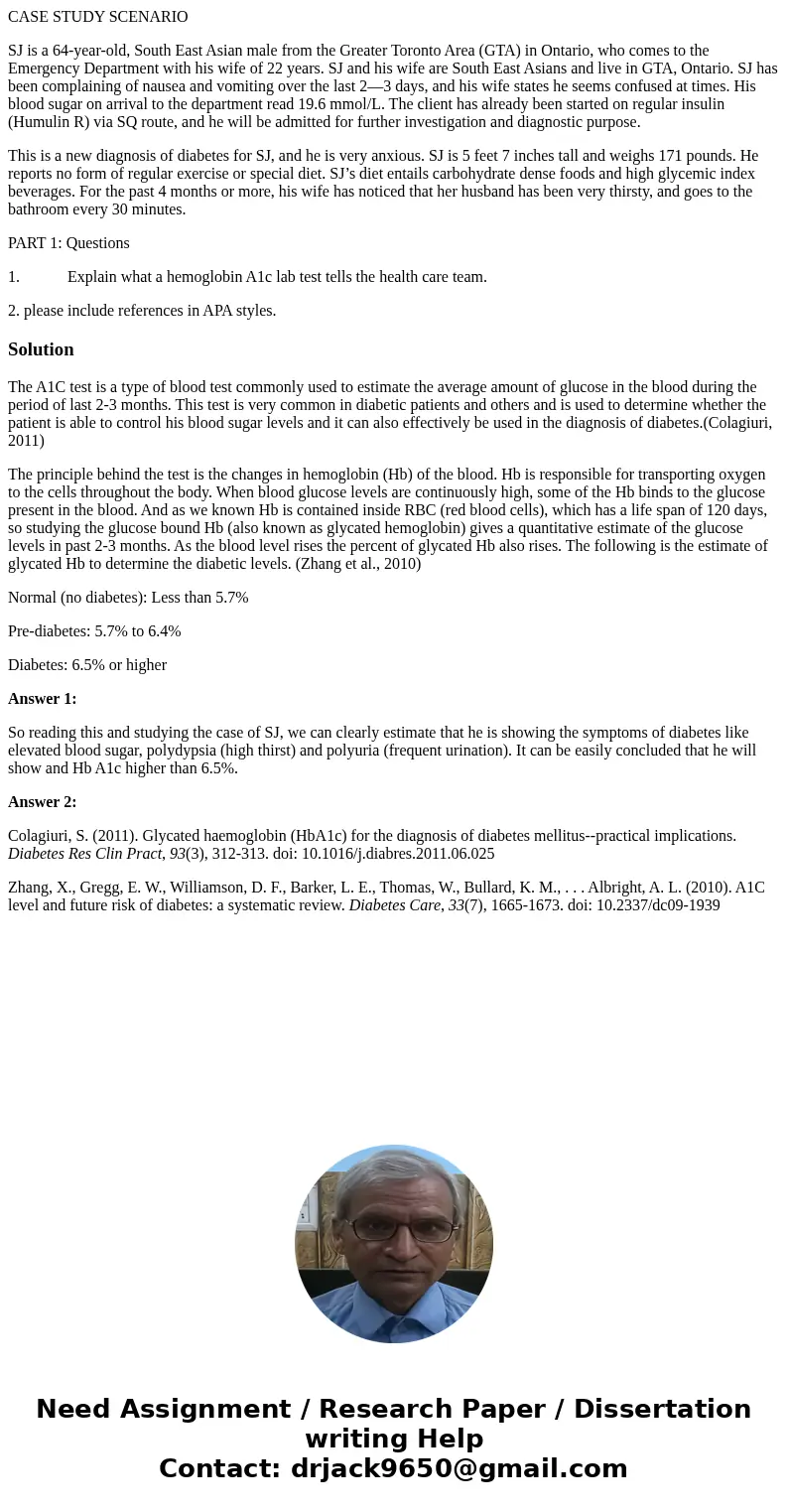CASE STUDY SCENARIO SJ is a 64yearold South East Asian male
CASE STUDY SCENARIO
SJ is a 64-year-old, South East Asian male from the Greater Toronto Area (GTA) in Ontario, who comes to the Emergency Department with his wife of 22 years. SJ and his wife are South East Asians and live in GTA, Ontario. SJ has been complaining of nausea and vomiting over the last 2—3 days, and his wife states he seems confused at times. His blood sugar on arrival to the department read 19.6 mmol/L. The client has already been started on regular insulin (Humulin R) via SQ route, and he will be admitted for further investigation and diagnostic purpose.
This is a new diagnosis of diabetes for SJ, and he is very anxious. SJ is 5 feet 7 inches tall and weighs 171 pounds. He reports no form of regular exercise or special diet. SJ’s diet entails carbohydrate dense foods and high glycemic index beverages. For the past 4 months or more, his wife has noticed that her husband has been very thirsty, and goes to the bathroom every 30 minutes.
PART 1: Questions
1. Explain what a hemoglobin A1c lab test tells the health care team.
2. please include references in APA styles.
Solution
The A1C test is a type of blood test commonly used to estimate the average amount of glucose in the blood during the period of last 2-3 months. This test is very common in diabetic patients and others and is used to determine whether the patient is able to control his blood sugar levels and it can also effectively be used in the diagnosis of diabetes.(Colagiuri, 2011)
The principle behind the test is the changes in hemoglobin (Hb) of the blood. Hb is responsible for transporting oxygen to the cells throughout the body. When blood glucose levels are continuously high, some of the Hb binds to the glucose present in the blood. And as we known Hb is contained inside RBC (red blood cells), which has a life span of 120 days, so studying the glucose bound Hb (also known as glycated hemoglobin) gives a quantitative estimate of the glucose levels in past 2-3 months. As the blood level rises the percent of glycated Hb also rises. The following is the estimate of glycated Hb to determine the diabetic levels. (Zhang et al., 2010)
Normal (no diabetes): Less than 5.7%
Pre-diabetes: 5.7% to 6.4%
Diabetes: 6.5% or higher
Answer 1:
So reading this and studying the case of SJ, we can clearly estimate that he is showing the symptoms of diabetes like elevated blood sugar, polydypsia (high thirst) and polyuria (frequent urination). It can be easily concluded that he will show and Hb A1c higher than 6.5%.
Answer 2:
Colagiuri, S. (2011). Glycated haemoglobin (HbA1c) for the diagnosis of diabetes mellitus--practical implications. Diabetes Res Clin Pract, 93(3), 312-313. doi: 10.1016/j.diabres.2011.06.025
Zhang, X., Gregg, E. W., Williamson, D. F., Barker, L. E., Thomas, W., Bullard, K. M., . . . Albright, A. L. (2010). A1C level and future risk of diabetes: a systematic review. Diabetes Care, 33(7), 1665-1673. doi: 10.2337/dc09-1939

 Homework Sourse
Homework Sourse